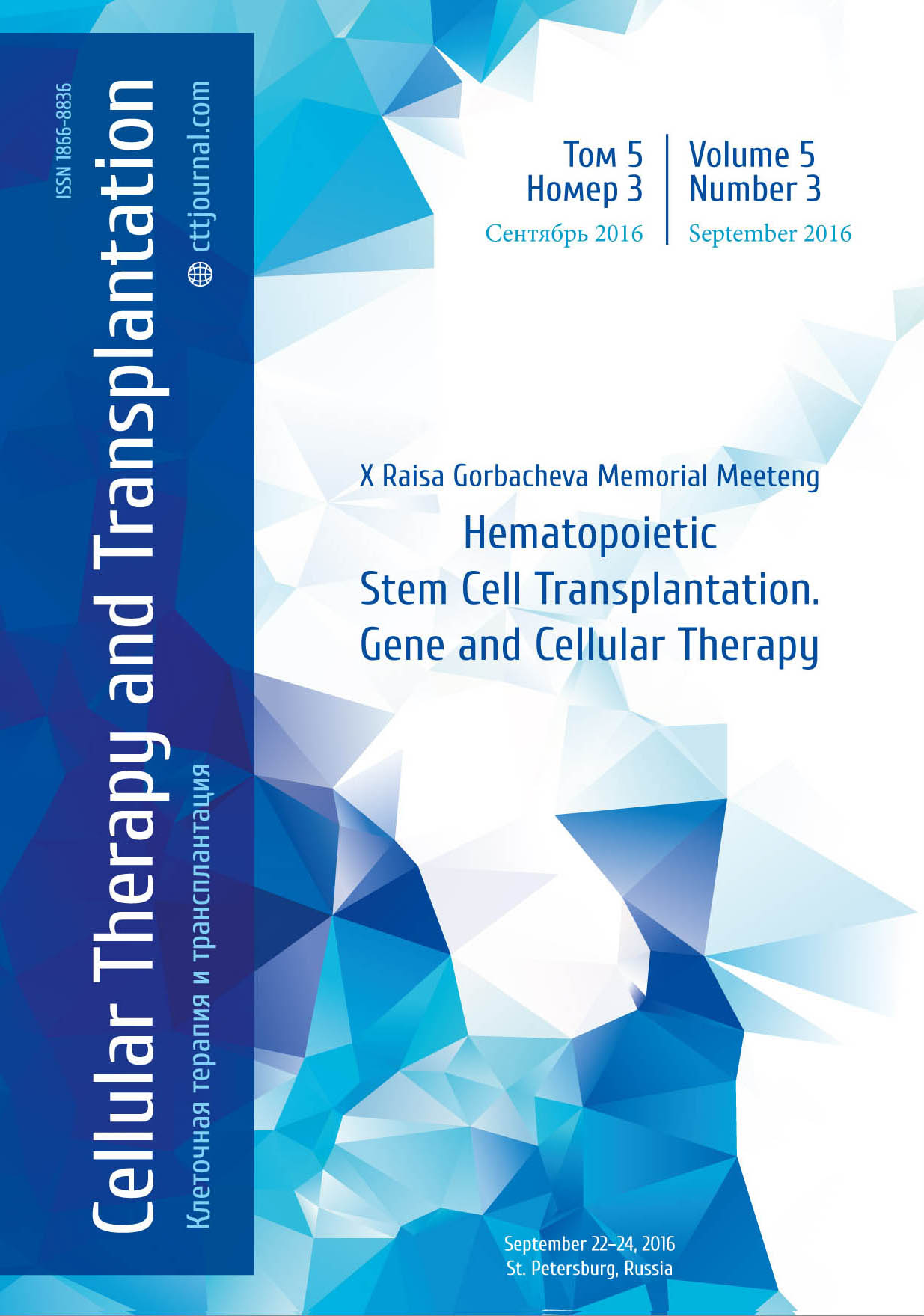Granzyme B expression in T-regulatory cells is a strong predictor of acute graftversus-host disease after day +30 in patients with classic immunosuppression after allo-HSCT
Сontact: Dr. Mikhail Drokov: Moscow
E-mail: mdrokov@gmail.com
Accepted 20 September 2016
Summary
Introduction
Granzyme B is a serine protease commonly found in cytoplasmic granules of cytotoxic lymphocytes and natural killer cells. It is secreted with the pore-forming protein perforin and mediates apoptosis in target cells. Granzyme B mediated cytolysis is one of the regulatory mechanisms, together with IL-2 receptors (CD25) by which T-regulatory cells (T-regs) influence T-effectors. Despite the well-known fact that T-regs participate in pathogenesis of aGVHD, and their levels after allo-HSCT inversely correlate with a probability of aGVHD, the data about functional status of T-regs and aGVHD is still limited.
Patients and methods
Peripheral blood samples were collected in EDTA-tubes at day +30 after allo-HSCT. We use PBMC from 29 patients with hematological malignancies obtained by density gradient media. This method was used due to lymphopenia in this group of patients. Group with no aGVHD consisted of 22 patients (AML=12, ALL n=5, LPD=1, CML=2, AA=1, MDS=1) after allo-HSCT (17, MUD; 5, mismatched unrelated donor). MAC conditioning was used in 17 cases, whereas 5 patients received RIC. The group of aGVHD after day +30 included 7 patients. (AML=4, ALL n=3) after allo-HSCT from MUD (n=5), mismatch unrelated donor (n=1) and 1 recipient of HLA-identical sibling donor. Two patients received a myeloablative conditioning (MAC), and 5 patients received reduced-intensity conditioning regimens (RIC). All the patients in both groups received standard immunosuppression (MMF+CSA+ATG). All the patients developed II-IV grade aGVHD (grade II, 1; grade III, 4; grade IV, 2 patients), with a median onset on day +50 (34-150). Anti-CD4-APC-Cy7, anti-CD25-APC, anti-CD127-FITC and anti-Granzyme B-PE (Becton Dickinson, USA) antibodies were used to determine T-regulatory cells population. A Bland–Altman plot (difference plot) was used to test the agreement between the two different T-reg assays (CD4+CD25high, CD4+CD25highCD127low), and no significant differences were found (p=0.942). Due to this fact, CD4+CD25high cells were identified in our experiments as T-reg cells (Gregg et al., 2005). 30,000 CD4+ cells were analyzed on a BD FACSCanto II to achieve sufficient statistical power (Becton Dickinson, USA).

Results
As seen from Fig. 1, the Granzyme B levels were higher in patients who never developed aGVHD. Fig.2 shows that a mean percentage of Granzyme B positive T-regs in GVHD-free patients was 7.26±1.89%, thus being significantly higher than in group who developed aGVHD after day +30 (2.04±0.93%; p=0.02). Noteworthy, according to our previous data, bacterial or viral infections (e.g CMV) and HLA-mismatches does not affect the Granzyme B expression levels in T-regs. Using ROC curve analysis (Fig.3), we obtained the area under curve (AUC) value of 0.74.
Keywords
Allo-hsct, granzyme b, t regulatory cells, acute graft-versus-host disease, predictive marker
Accepted 20 September 2016


